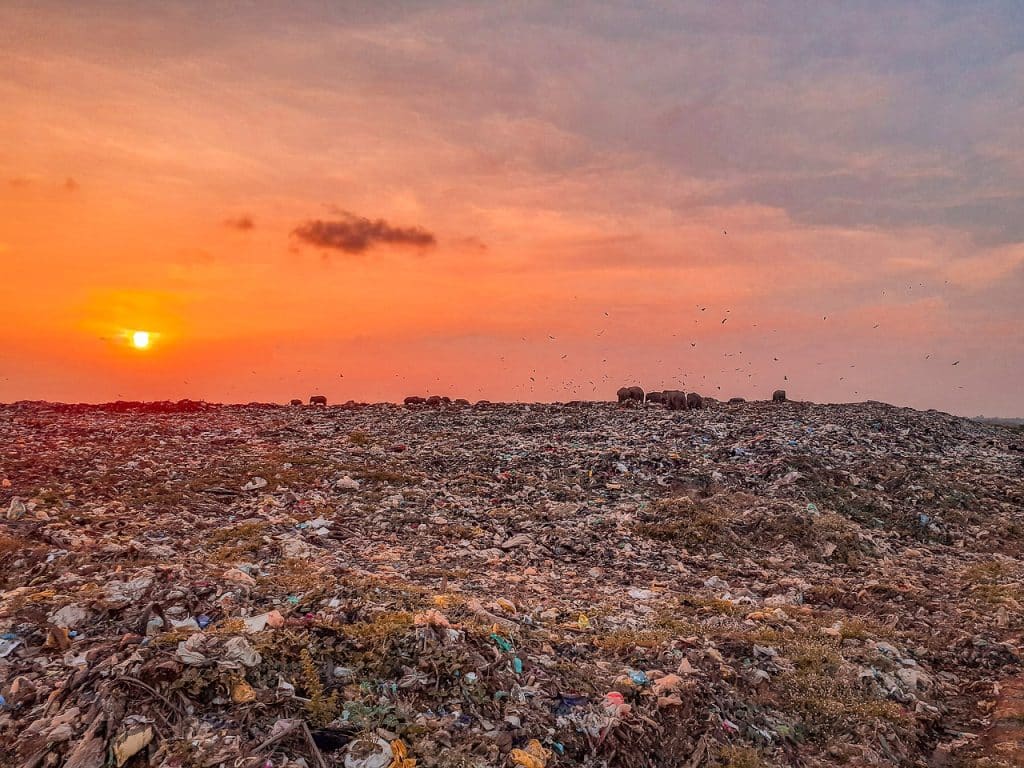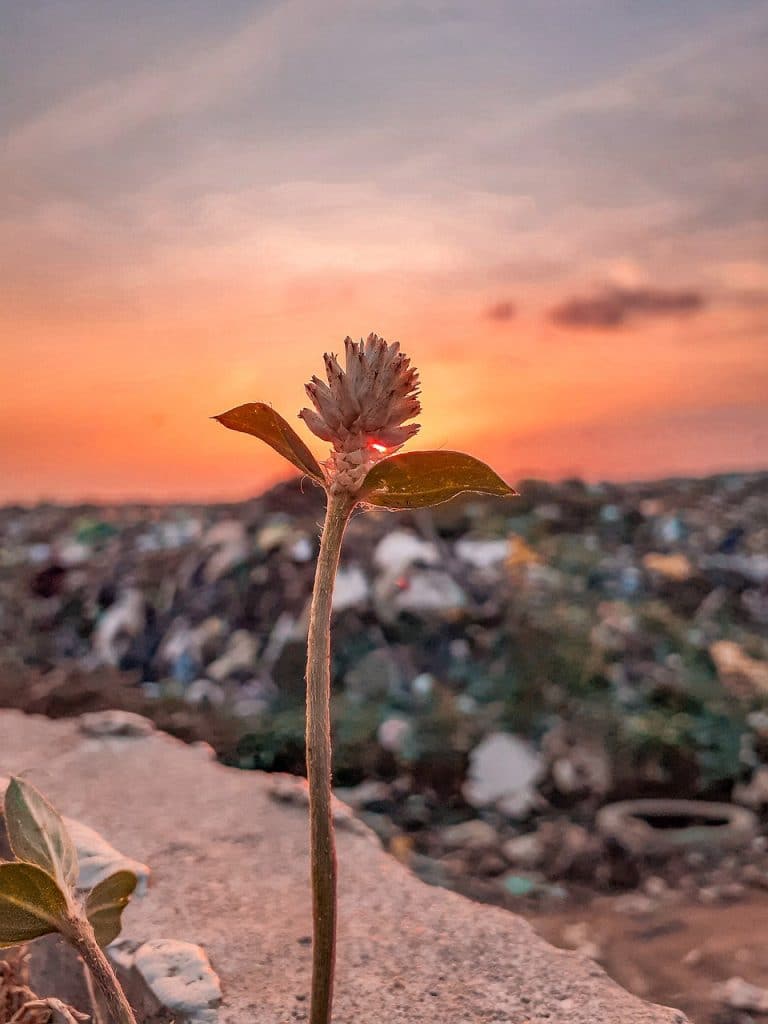Land pollution is a growing environmental issue that affects all living things. Mainly caused by human activities, like manufacturing, mining, and agriculture, land pollution can have serious consequences for our health and environment.
What is land pollution, what causes it, and how can we prevent it? Read on to find out all you need to know.
Learn in This Article
- What Is Land Pollution
- Causes of Land Pollution
- Effects of Land Pollution
- Solution of Land Pollution
What Is Land Pollution
We first need to talk about the definition of land pollution. It’s an environmental degradation that occurs when harmful substances are directly deposited on land. Generally caused by human activity, land pollution can happen when dangerous chemicals are released into the air and eventually settle on the ground.
Toxic substances can linger in the soil and water, posing a long-term threat to plant and animal life. What’s more, land pollution can lead to the contamination of food supplies, as harmful chemicals can work their way up the food chain. In short, land pollution is a serious problem with far-reaching consequences.

Causes of Land Pollution
Many human activities can contribute to land pollution. Let’s take a closer look at the most common causes.
Urbanization
As cities continue to grow, more and more land is converted into urban land. Therefore, urbanization contributes to the destruction of natural habitats and an increase in the production of waste.
Construction
Construction projects often involve the use of heavy machinery, which can damage the land. In addition, construction waste, such as concrete and bricks, can cause severe land environmental issues.
Mining
Unfortunately, when mines are not properly managed, they can pollute the surrounding environment with dust and toxic chemicals.
Agriculture
Intensive farming practices can lead to land pollution in a number of ways. For example, pesticides and fertilizers can contaminate the soil, while livestock waste can pollute water supplies.
Littering
When people carelessly throw their trash on the ground, it can end up polluting the environment as a result.
Nuclear Waste
Nuclear waste is one of the most dangerous types of pollution. If not properly disposed of, it can stay in the environment and cause serious health problems.
Landfills
When garbage and textiles are not properly disposed of, they can release harmful chemicals into the environment.
Deforestation
When trees are cut down, the soil is exposed to the elements and can become degraded.
Effects of Land Pollution
Land pollution can have several negative effects on the environment.
Soil Pollution
Soil pollution effects can be quite disastrous because it contaminates the soil with harmful chemicals. This can make it difficult for plants to grow.
Groundwater Poisoning
Groundwater poisoning occurs when toxic chemicals from the land reach groundwater supplies. This can make drinking water unsafe and cause many health problems.
Habitat Destruction
Habitat destruction is one of the most serious effects of land pollution. When the land is polluted, it can become uninhabitable for plants and animals, leading to biodiversity loss and wildlife displacement.
Climate Change
Land pollution can also contribute to climate change. When the land is polluted, it can absorb more heat, which can lead to an increase in global temperatures.
Human Health Problems
Land pollution can also have a number of negative effects on human health. Exposure to harmful chemicals can cause a variety of health problems, including cancer, congenital disabilities, and respiratory problems. In addition, land pollution can also lead to the contamination of food supplies.
Wildfires
One of the most dramatic effects of land pollution is an increase in wildfires. When the land is polluted, it becomes drier and more flammable.
Water Issues
Last but not least, land pollution causes some water-related problems. The contamination of drinking water supplies, flooding, and soil erosion are only some of the most dangerous examples of water pollution.

The Solution to Land Pollution: How Can You Reduce the Risks
There are a number of ways to prevent land pollution, so let’s see.
Reforestation
Replanting trees can help prevent land pollution. Trees help stabilize the soil and prevent erosion. Not to mention, they help filter out harmful chemicals from the environment.
Reduce, Reuse, Recycle
The rule of reducing, reusing, and recycling is crucial to preventing land pollution. By reducing the amount of waste we produce, we can reduce the amount of pollution in the environment.
Use Fewer Pesticides and Fertilizers
Pesticides and fertilizers can pollute the environment and cause severe health problems. By using fewer of these products, the risk of land pollution can be reduced.
Land Pollution FAQs
What are the examples of land pollution?
Illegal dumping in natural habitats is arguably the most common example of land pollution. Littering, unsustainable logging practices, pesticides, and nuclear accidents also contribute to soil pollution.
How does land pollution affect us?
Land pollution is a growing problem in many parts of the world. As more and more people move to urban areas, there’s less space for green spaces and open areas. This often results in more garbage and waste in landfills.
Landfills are not only unsightly, but they can also release harmful chemicals into the environment. These chemicals can pollute the air, water, and soil, harming animals and plants along the way. In addition, landfills take up valuable space that could be used for other purposes, such as housing or recreation.
How does land pollution affect climate change?
Climate change is a global problem caused by releasing greenhouse gasses into the atmosphere. These gasses trap heat, causing the Earth’s temperature to rise.
Land pollution is a major contributor to climate change, as it releases large amounts of greenhouse gasses into the air. The burning of fossil fuels releases carbon dioxide, which is a major greenhouse gas. In addition, the production and use of synthetic fertilizers and pesticides also release harmful gasses into the atmosphere.
Climate change has a number of negative impacts, including rising temperatures, melting glaciers, and extreme weather events.
What Is Land Pollution: Key Takeaways
- Land pollution is any land contamination that makes it unsuitable for its intended use.
- Land pollution can come from many sources, including agriculture, manufacturing, mining, and waste disposal.
- Polluted land can have a variety of negative impacts on both the environment and human health. It can cause soil erosion, water contamination, and habitat loss.
- There are several ways to prevent land pollution, including reforestation, reducing, reusing, and recycling.
